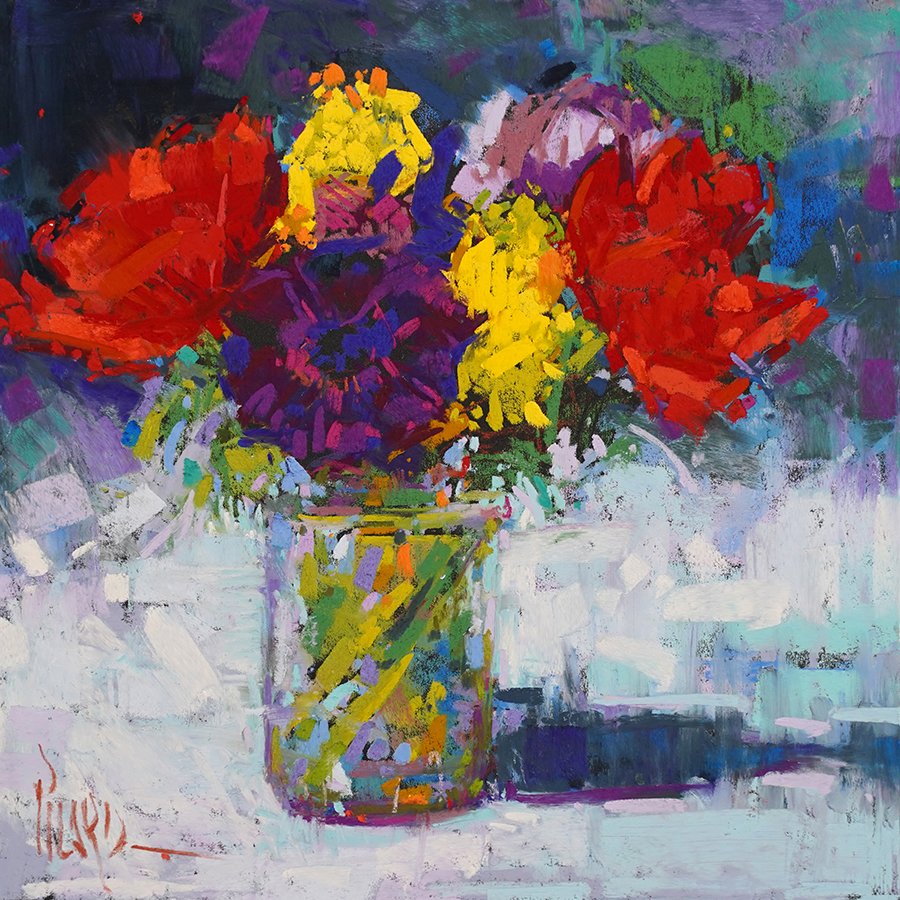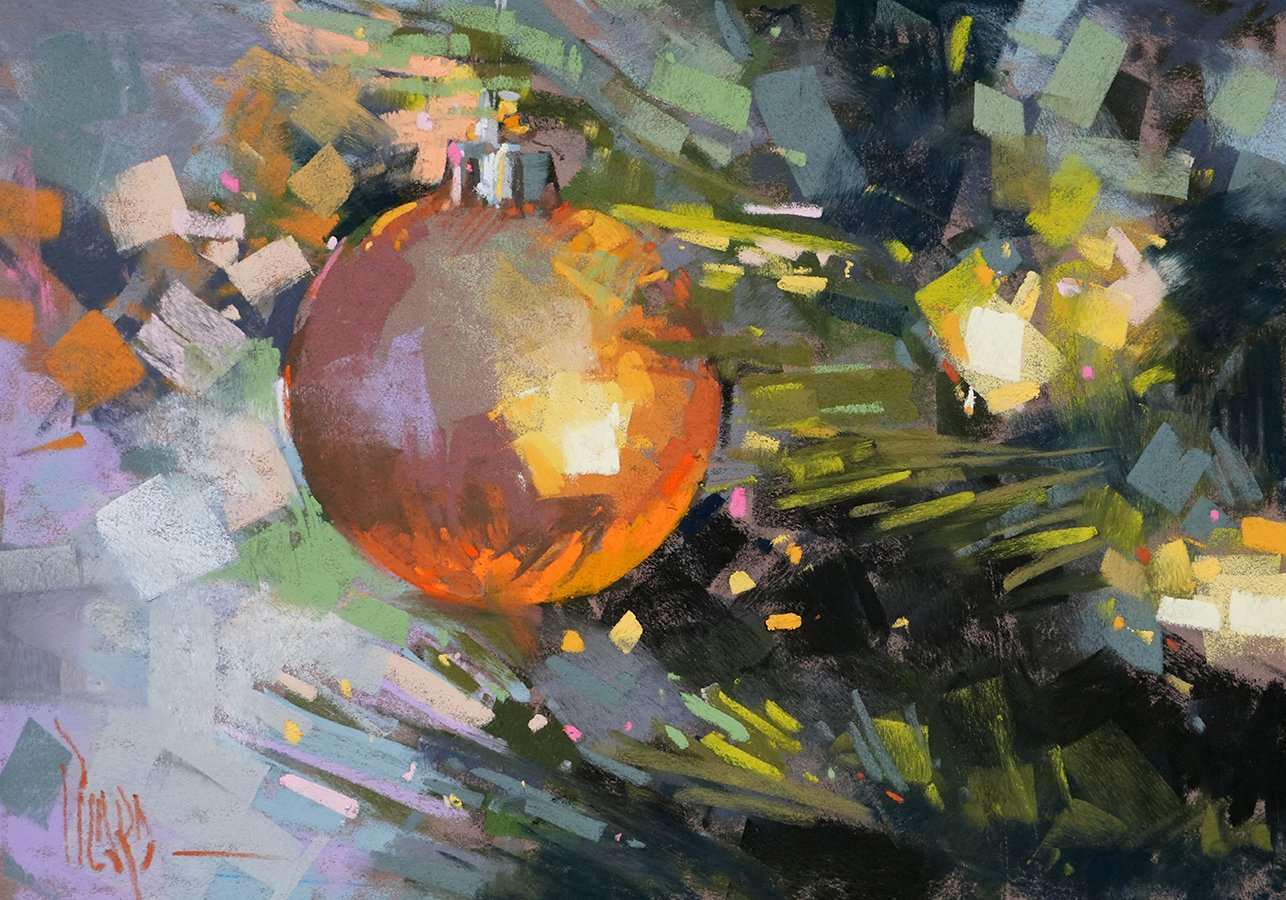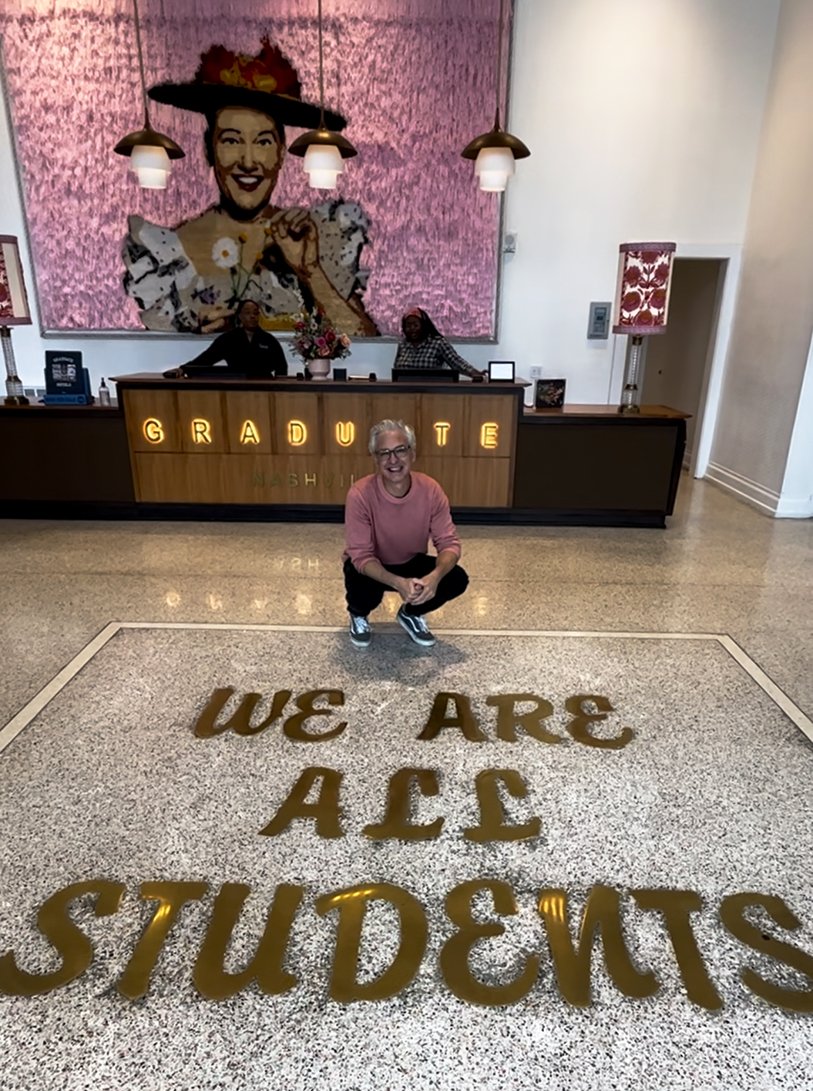How to Create Expressive Floral Abstractions This Spring
Spring is a wonderful season of rebirth, and there’s nothing quite like florals to allow our creative spirits to bloom in new ways. I’ve recently discovered this magic myself by moving beyond literal representation to capture the emotional essence of a subject. This resulted in an expressive floral abstraction that speaks to the heart.
Alain Picard, L’Essence de L’Amour, 12x12” pastel on UART 400
Here are a few thoughts on my experience so you can explore your own floral abstractions.
The Power of Personal Expression
When you integrate design principles with color knowledge and your own unique touch, something wonderful happens. Your personal artistic voice begins to flourish, allowing you to interpret floral subjects with fresh emotion and perspective. Let your design ideas lead you in this exploration of the abstract. Then layer the poetry of color upon this foundation.
Soft pastels can offer an ideal medium for this exploration. Their velvety texture creates both delicate subtleties and bold presence that can transform a floral subject like pink peonies into abstract expressions of beauty.
Finding Your Flow
Successful floral abstraction involves listening and responding to what emerges on your surface. The empowering truth is that you can leave as much of the representational aspect behind as you wish. Some of us will hold onto more recognizable elements of our subject while emphasizing abstract qualities. Others will venture into pure abstraction where only color, form, and emotion remain. Each journey into abstraction can be as unique as you are, so be bold and explore.
Consider these approaches to enhance your expressive work:
Seeds of Design: Harness the power of value shapes as the seeds of your abstract design
Dynamic Textures: Allow the gritty, intimate qualities of your materials to become part of your expression
The Power of Scale: Larger works often bring new power and dimension to your abstractions
Multimedia Exploration: Underpaintings in watercolor or acrylic can add exciting and spontaneous new dimensions to your abstraction
Let Your Creativity Blossom
This spring, I invite you to create an expressive floral abstraction that flows from your unique artistic voice. Let your own personal design elements and color choices take root as your expressive side blossoms with new life. Move from observation into heartfelt expression as you allow how you feel about the subject to take priority over the facts set before you.
Whether your creative voice is just beginning to bud or reaching full bloom, we’re all tending this creative garden together. That is a beautiful sight to behold.





















